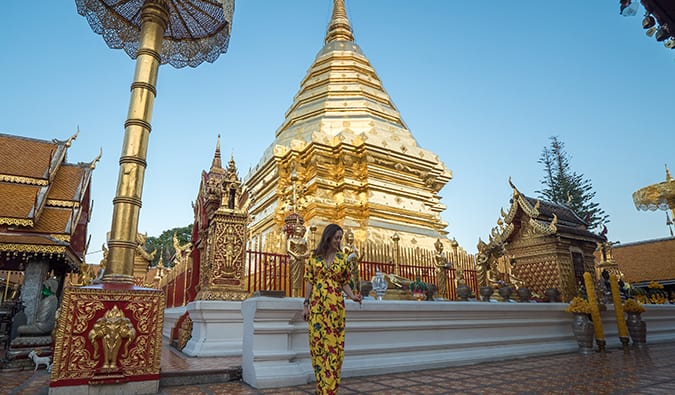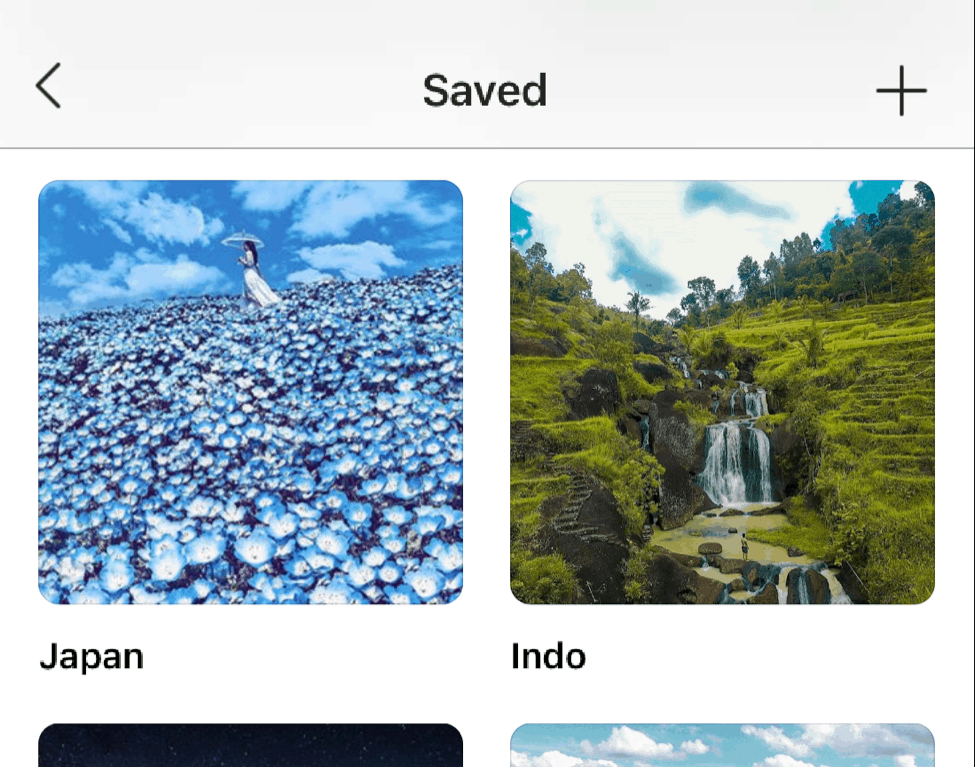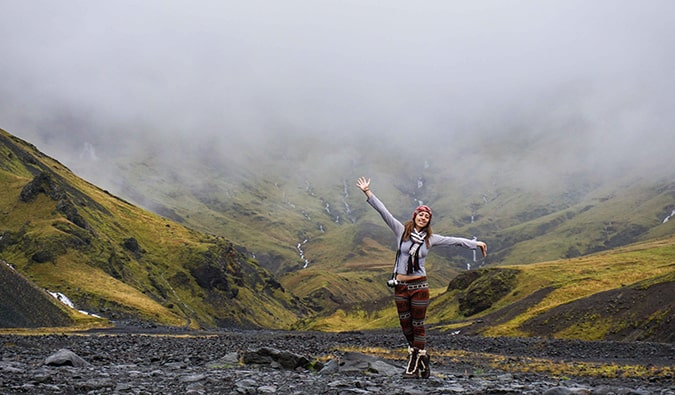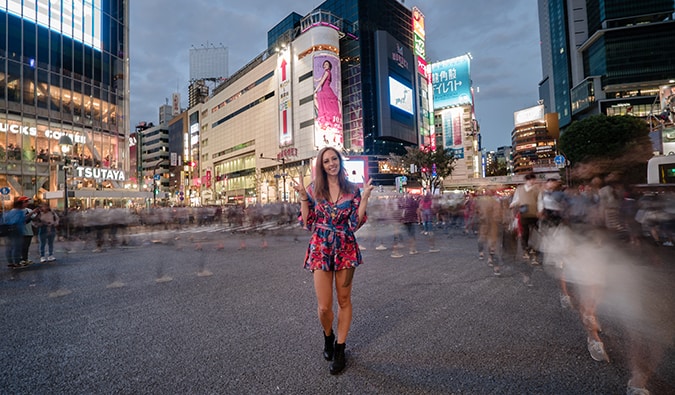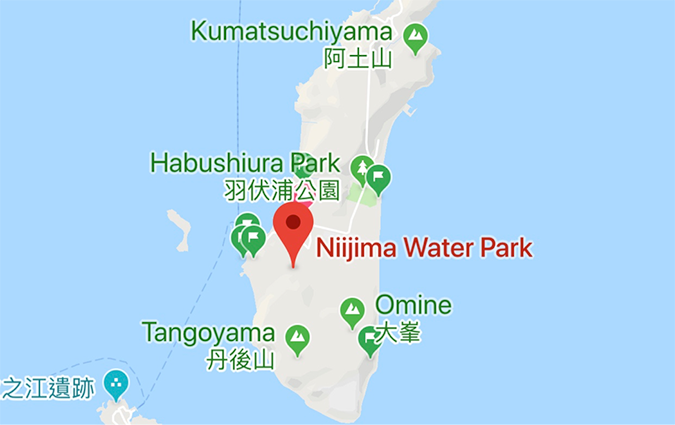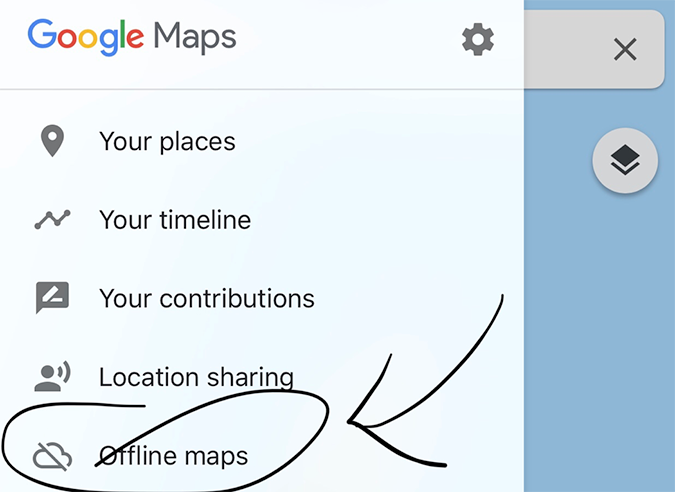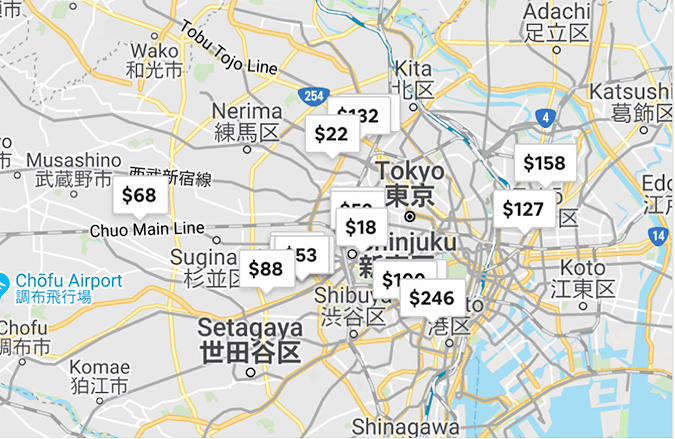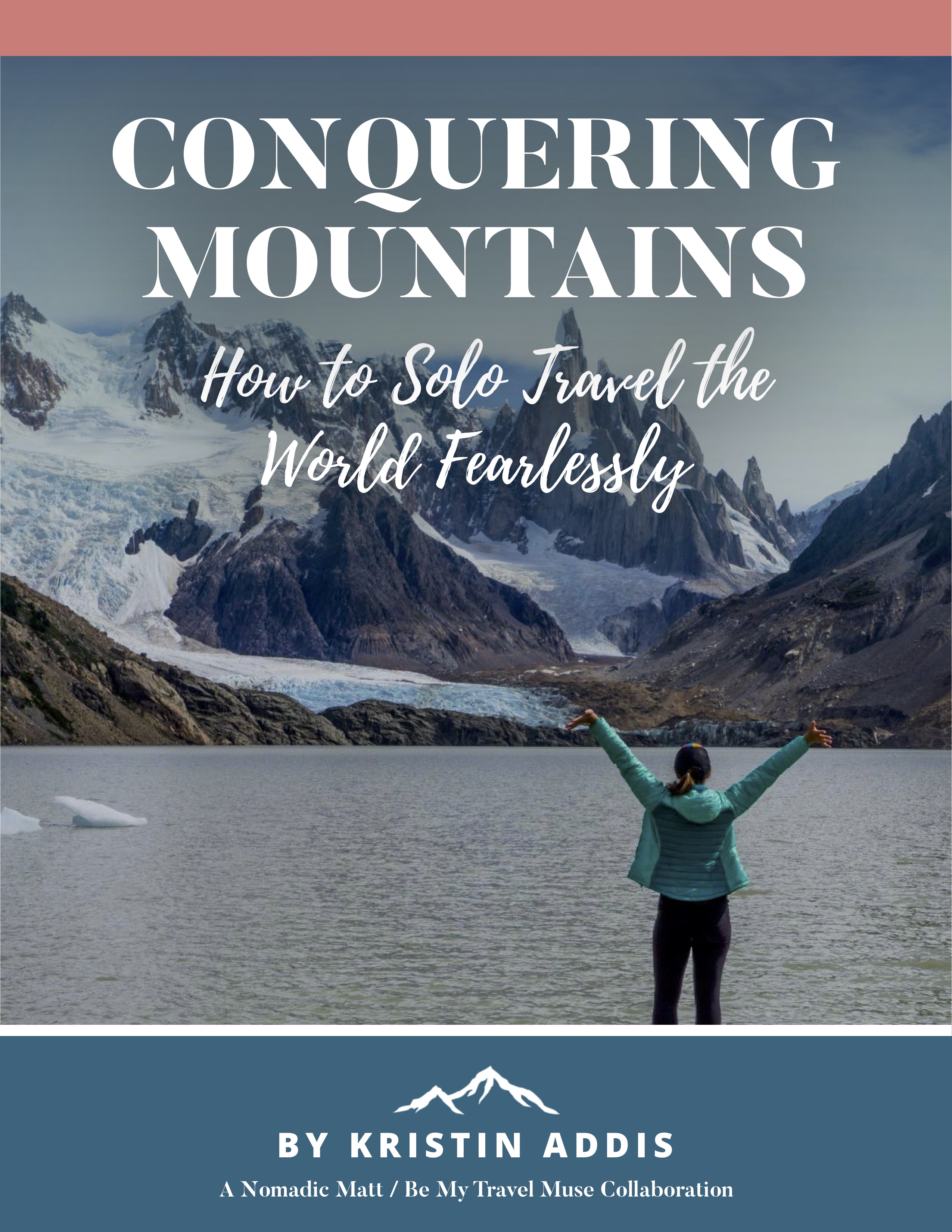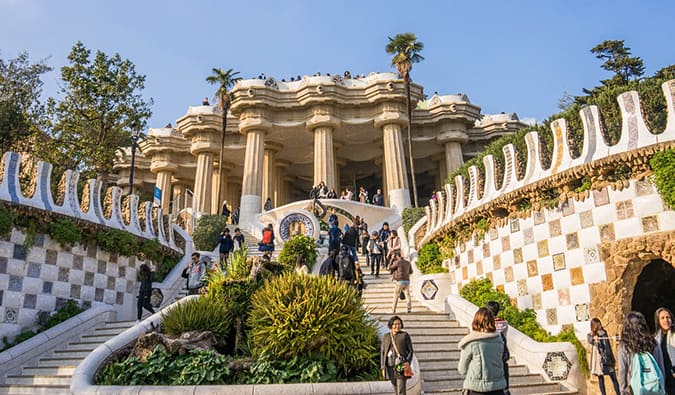
Posted: 1/7/19 | January 7th, 2019
Barcelona is one of the most popular destinations in Europe. It’s a city that I’ve been to many times.
Once a major city in the Roman Empire, the city still places an important role in the region and is home to millions of residents and visitors enjoying all the delicious sangria and gin, mouthwatering food, stunning beaches, warm weather, the rich history and culture, and unique architecture that Barcelona is famous for.
Barcelona is one of the most vibrant, fun, energetic cities in the world.
Barcelona is such a popular place that in recent years it’s even had to clamp down on “overtourism” to help reduce the number of visitors. (This is something I fully agree with since cities must learn to balance tourism with local life.)
With so much to see and do in and around Barcelona, where do you begin? How many days do you need to visit?
I think to really get a feel for Barcelona you should plan for four or five days. While you could see it in less, you’ll do yourself a disservice if you rush your visit. This is a city of late night dinners, late morning, and afternoon siestas.
Life isn’t rushed here and neither should your visit.
This 2-5 day itinerary highlights all the best things to see and do and help you organize your visit so you can see it all!
Barcelona Itinerary: Day 1
Take a free walking tour

I love free walking tours. I think they are a wonderful way to get to know a new city, find your way around, and learn some history in the process. (And, since they are filled with traveler too, they can also be a good way to meet other people.) My recommended walking tour companies in Barcelona are:
Get lost in the Barri Gotic
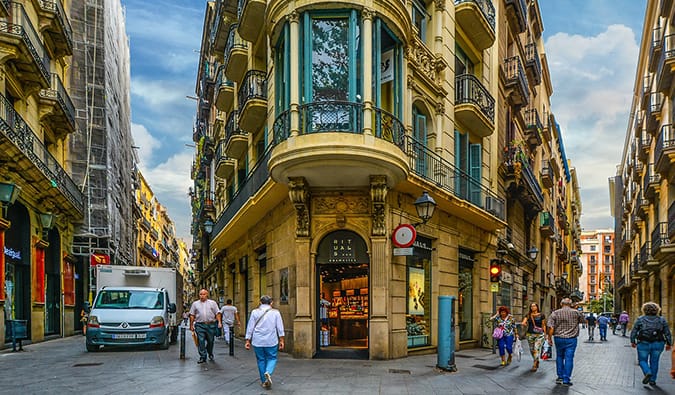
Barcelona’s old Gothic Quarter is my favorite part of town, filled with narrow, winding streets and historic buildings. Spend a few hours getting lost in this district. To me, it’s the most beautiful area in the city. The area also has numerous attractions worth seeing:
- Barcelona History Museum – Barcelona has one of the best city history museums I’ve ever visited, including 4,000 square meters of Roman ruins beneath the museum that you can walk through. There is a free, detailed audio guide and meticulous explanations of the exhibits. If you do one thing in the city, make it this. I visit every time I’m in Barcelona. The ruins are just stunning. Admission is €7. Address: Plaça del Rei.
- The Grand Royal Palace – The Palau Reial Major (near the history museum) was the home of Barcelona’s counts and later the kings of Aragon. It has a very detailed history about the city and region through the centuries. Admission is €7. Free on the first Sunday of the month and every Sunday after 3pm. Address: Plaça del Rei.
- Chapel of Santa Àgata – This royal chapel was built in 1302. The most interesting thing inside is the beautiful altarpiece, made by Jaume Huguet, that was added in the 15th century. It contains beautiful paintings of religious symbols in the style of the Middle Ages. Don’t miss it! Admission is €7. Address: Plaça del Rei.
- Barcelona Cathedral – Built in the late 13th to early 15th centuries, this is a classic Gothic cathedral with huge spires, colorful stained glass, and incredible wood carvings. If you go inside, pay the extra €3 to visit the terraces, where you’ll get an incredible view of Barcelona. Admission is €7, though you can sometimes get in for free (there’s no apparent schedule to this). Address: Placita de la Seu, 3.
Explore Gaudí’s architecture

Gaudí is Barcelona’s most famous and creative architect. His unique style, use of nature motifs, and catalog of work is legendary – and part of the reason so many people visit the city. No visit to the city is complete without a tour of Gaudí’s works. You can find them everywhere — in addition to the buildings listed below, he even designed lampposts, monuments, and sculptures. Here are the best sights to see:
- Park Güell – Park Güell is a 45-acre garden complex designed and built between 1900 to 1914. It’s since been converted into a municipal garden and is now a World Heritage Site. The focal point of the park is the main terrace, which is surrounded by a long bench in the form of a sea serpent. Known for incorporating various themes into his work, Gaudí incorporated artistic elements of Catalan nationalism as well as ancient poetry and mysticism into this work. The park is right near La Sagrada Familia so it’s easy to visit both. I like how colorful everything in the park is! Tickets are €8.50, at the ticket office, or €7.50 when you order in advance online. Children six years old and younger are free. Address: Carrer d’Olot.
- La Sagrada Família – The most famous of Gaudí’s work….and one that seems to never be finished. The church has been under construction for over than 100 years (the groundbreaking was in 1882 and is supposed to be done in 2030!). Gaudí was a devout Catholic and spent the last 10 years of his life working on this project. The church blends influences of man, nature, and religion in its detailed architecture. The audio guide is worth purchasing as it covers the history of the church in great detail. Try to visit mid-morning to late afternoon so you can witness the sunlight cascade throughout all the stained glass. Admission is €15 online/€18 at the door. Address: Plaça de la Sagrada Familia.
- Casa Batlló – Casa Batllo is a building restored by Antoni Gaudí in the early 1900s. He spent 2 years on the project completely revamping the exterior, main floor, patio, and roof. With its undulating shape, it’s definitely one of the more eye-catching of his creations. Located in the Eixample district of Barcelona, it (like everything Gaudí designed) was heavy influenced by the Art Nouveau style. The facade was decorated with a mosaic made of broken ceramic tiles that he collected from the trash of a nearby glass shop. The roof is arched and has been likened to the back of a dragon. It’s one of my favorite Gaudí buildings. Admission is €24.50 online/€28.50 at door. Address: Passeig de Gràcia, 43.
- Casa Milà (also called La Pedrera) – From 1906 to 1910, Gaudi work on Casa Mila, also known as “La Pedrera” (the stone quarry) as the building has a facade of limestone. The goal was to evoke the sense of a snowy mountain. Gaudí, himself a Catholic and a devotee of the Virgin Mary, also planned for the Casa Milà to be a spiritual symbol and included many religious elements like an excerpt from the rosary prayer on the cornice and statues of Mary, St. Michael, and St. Gabriel. Casa Milà became run down and partially abandoned until it was restored in the late 1980s to its original form. Admission is €22 online/€25 at door. Address: Passeig de Gràcia, 92.
- Palau Güell – Located off La Rambla, Palau Guell (Guell Palace) building doesn’t jump out at you like other Gaudí structures. Built from 1886-88, it was designed for one of Gaudi’s patrons, Eusebi Güell. The home is centered around the main room used to entertain high-society guests. The main party room has a high ceiling with small holes near the top where lanterns were hung at night from the outside to give the appearance of a starlit sky. There are colorful tree-like chimneys on top. It’s a bit creepy and gothic to me. One of my favorites too! Admission is €12 (free on the first Sunday of every month). Address: Carrer Nou de la Rambla, 3-5.
Note: Advanced reservations are recommended for Park Guell, Sagrada Familia, Casa Mila, and Casa Batllo so you can skip the lines!
Barcelona Itinerary: Day 2
Visit the Picasso Museum

While I’m not a huge fan of most of Picasso’s later work, it’s still interesting to learn about the life and work of one of the most influential artists of the twentieth century. With more than 4,000 pieces of art, there certainly is a lot to see here. Admission is €11, with discounts available for students and seniors. Free Thursday evenings, 6-9pm and on the first Sunday of each month. Address: Carrer Montcada, 15-23.
Barcelona Museum of Contemporary Art (MACBA)

This museum has over 5,000 works, including an extensive collection of pieces by Spanish artists such as Joan Miró and Pablo Picasso. There are also works by Americans Andy Warhol and Alexander Calder (who is known for his innovative mobiles). If you love modern art, be sure to add this to your itinerary. Admission is €10, with discounts available. Free Saturdays, 4-8pm. It’s always free for anyone under 14. Address: Plaça dels Àngels, 1.
La Boquería
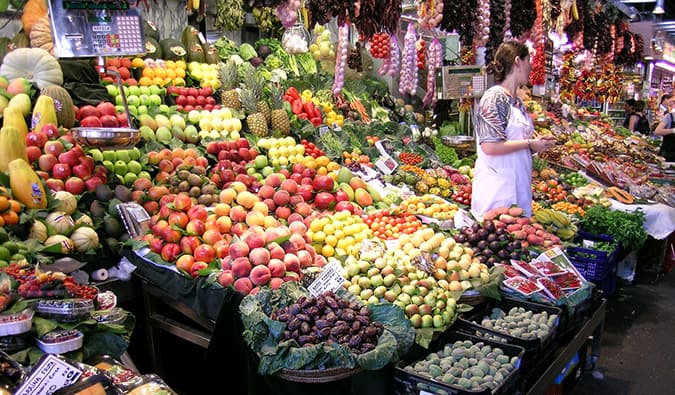
This public market has an amazing array of food stalls and restaurants. It’s been at this location for hundreds of years, in a building with a beautiful iron entrance. It’s right off La Rambla (a long, popular central thoroughfare, see below), so the market is typically very busy. But grab a snack or an inexpensive lunch of ham, bread, cheese, and fruit and enjoy the scene. There’s a wide variety of seafood, including fish, shrimp, octopus, and oysters, as well as nuts, candy, wine, and tapas.
NOTE: Due to overcrowding, tourist groups are now restricted to 15 people or less. You’ll have no problem moving about on your own, but if you’re in a large group….well, be prepared to get kicked out! The city is (appropriately) trying to take back the markets for locals. Watch for changes to how they allow tourists into the market.
Take a stroll on La Rambla

The popular 1.2km long boulevard with a broad but crowded walkway in the center has many beautiful buildings along it including the Gran Teatre del Liceu, the city’s opera house. Near the theater, you can also see a mosaic by Joan Miró. And there are street performers galore here (they even have their own union). While this street is ground zero for tourists in the city (don’t eat at the restaurants here, they suck), it’s worth a stroll down at least once.
Hit the beach
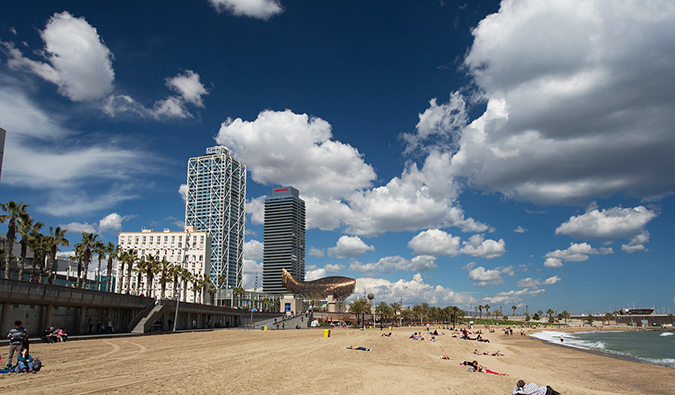
You’ve done a ton of walking so far, so take the afternoon to relax! Barcelona has a wide and long beach, Barceloneta, that is incredibly popular year-round. The water is good to swim in, the sand is golden colored, and there are a lot of good restaurants on the boardwalk. It’s always busy with tourists and locals, however, so walk further from the center to reach some quieter and cleaner beaches, such as Sant Sebastià in the south and Somorrostro in the north.
Watch some flamenco
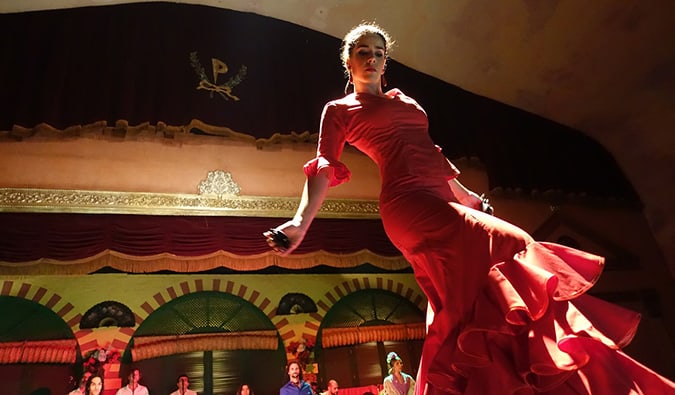
Spend your evening watching flamenco at one of these places:
- Los Tarantos – This is Barcelona’s oldest flamenco venue. It’s a short show (just 30 minutes) so it’s a good place for an introduction to the art and won’t take up your entire night. Admission from €15. Address: Plaça Reial, 17.
- Palau Dalmases – One of the best things about the flamenco shows here is the venue. This palace has amazing décor and incredible architecture. Admission is €25, with one drink included. Address: Carrer de Montcada, 20.
- Tablao Flamenco Cordobes – This show is in a convenient location on Barcelona’s main walkway, but it’s pricey. Admission is €45 (drink and show) or €79.50 (dinner and show). Address: La Rambla, 35.
- Tablao de Carmen – This show typically features excellent performers, and it’s in an interesting venue that’s a replica of a Spanish village. Admission is €43 (drink and show) or €61 (dinner and show). Address: Av. de Francesc Ferrer i Guàrdia, 13.
Barcelona Itinerary: Day 3
Ride the harbor cable car

The 1,450-meter-long harbor aerial tramway with red cars connects Barceloneta and Montjuïc (a prominent hill). The 10-minute trip gives you incredible views of Barcelona. You’ll see the port and sea on one side and the city on the other. Also, at the top of the 78-meter Sant Sebastià (San Sebastián) tower in Barceloneta, there’s a restaurant accessible by an elevator. A round-trip ticket is €16.50; a one-way ticket is €11.
Explore Montjuïc Hill
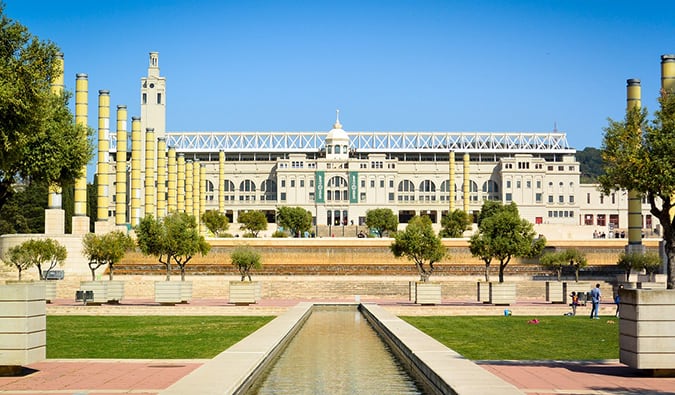
When you arrive on the hill from the cable car (or bus #150 if the cable car isn’t in your budget), you’ll find there’s a lot to do here. You can explore the Castell de Montjuïc (a large 18th-century fortress), as well as gardens, a Spanish village, and the Olympic Stadium. Be sure to also visit the Magic Fountain for the colorful water show. You’ll be able to enjoy a sweeping view of the city; watching the sunset from here is amazing too. Some highlights of Montjuïc:
- Castell de Montjuïc – This is an old fortress that’s now a museum featuring military displays and information on the history of the castle. The surrounding garden is a beautiful collage of color. Admission is €5. Free Sundays after 3pm and on the first Sunday of each month. Address: Carretera de Montjuïc, 66.
- Joan Miró Foundation – Joan Miró was one of Catalonia’s most famous artists. Many of the surrealist’s works are on display in this museum. Admission is €12. Address: Parc de Montjuïc.
- Museu Nacional d’Art de Catalunya – This art museum houses Catalonian art, particularly Gothic, Renaissance, and Baroque works. The fountain out front has a spectacular free show that takes place on Fridays and Saturdays from 7pm-9pm (from October-December and February-April), and Thursdays-Sundays from 9pm-11:30pm (from May-September). Admission is €12. Free Saturdays after 3pm, the first Sunday of each month, and for visitors under 16 or over 65. Address: Palau Nacional, Parc de Montjuïc.
- Poble Espanyol (Spanish Village) – The Spanish Village was built in 1929 to resemble an actual traditional village with 117 buildings from different Spanish regions. There’s an Andalusian quarter, a section of the Camino, a monastery, and more. There are also various exhibits here devoted to crafts and contemporary art. It’s a good family activity. Admission is €12.60, with discounted rates for children, students, and seniors. The village is open daily, year-round starting at 9am and closing no earlier than 8pm. Address: Av. Francesc Ferrer i Guàrdia, 13.
- The Olympic Ring – When Barcelona hosted the 1992 Olympic Games, all of the excitement centered around the Olympic Ring: the Olympic Stadium, Palau Sant Jordi, and the Olympic Esplanade. You can roam the entire space for free. Address: Parc de Montjuïc.
Take a food tour or cooking class
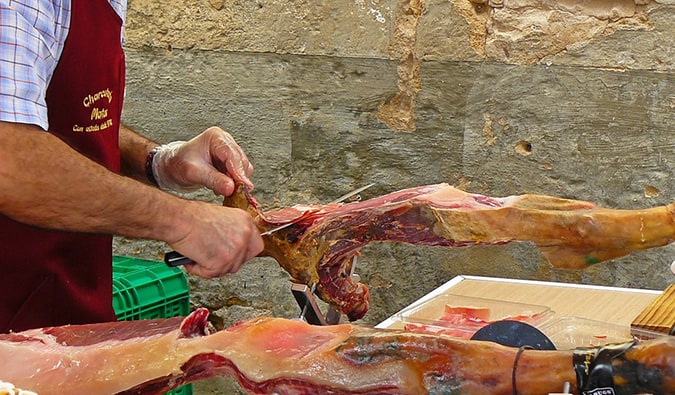
Barcelona is a very food-centric city, so I highly recommend a cooking class or a food tour! You’ll learn about traditional Catalan cooking, selecting the freshest ingredients, and using new techniques. You’ll prepare your own meal and enjoy the fruits of your labor. Some companies to check out are:
- bcnKITCHEN – (bcnkitchen.com, from €50)
- Barcelona Cooking – (barcelonacooking.net, from €65)
- Just Royal Bcn – (justroyalbcn.com, from €77).
- Context Food Tour – (contexttravel.com, from €80).
- Walks – (takewalks.com, from €77).
- Devour – (devourbarcelonafoodtours.com, from €69).
Barcelona Itinerary: Day 4
Take a day trip to Girona
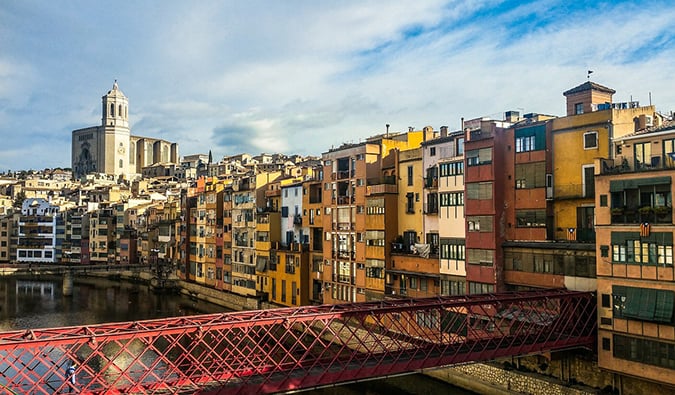
This medieval city, just 100km from Barcelona, is one of my favorite destinations in Spain – and far too overlooked by travelers. Here you can climb atop the city walls, wander the narrow lanes of the Jewish Quarter, and soak up the ambiance at one of its many cafés. They filmed Game of Thrones here too! There’s a lot of history and delicious food in the city!
The Renfe train ride is about 80 minutes on the normal train (return tickets from €20); the high-speed train gets there in 38 minutes (return tickets from €30).
Other Things to See and Do in Barcelona
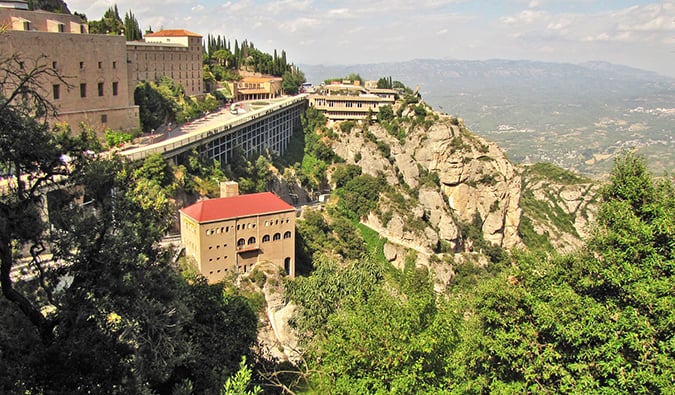
If you have more than four days in Barcelona, you’re in luck. There are plenty of other activities to fill your time:
Head to Montserrat – The Montserrat mountain range is just outside of the city and makes for a great getaway from Barcelona’s urban atmosphere. You can reach the area by taking a one-hour train ride. Once there, pay a visit to the famous shrine of the Black Madonna at the monastery and walk around the park. The Benedictine monastery and the valley of unique, rocky pillars make for some really awesome photography. Return train tickets are around €20, and you’ll also need to decide whether to take the cable car (my preference) or funicular up the mountain.
Visit an old-school amusement park – Tibidabo Barcelona, built in 1899, is one of the oldest amusement parks in the world. On a tall mountain in the Serra de Collserola, it also offers an incredible view of Barcelona and the coastline. It’s open on the weekends, except in the winter. Admission is €28.50 for adults, €10.30 for children under 1.2m tall, and free for children under 0.90m tall. Address: Plaça del Tibidabo, 3.
Catch an outdoor film – If you’re in Barcelona in July or August, consider going up to Montjuïc Castle to catch an outdoor film on the lawn of the castle’s moat. Screenings take place on Mondays, Wednesdays, and Fridays and are preceded by some cool live music.
Watch a soccer match – The first “football” game I ever saw was in Barcelona. It was Espaynol versus Valencia. I still have the shirt I bought that day. Barcelona’s two teams are Espanyol and FC Barcelona and, if a match is going on, try to take in one. Locals are obsessed with the sport and you’ll make a lot of good friends at the game! If you can’t make a game, you can tour the stadium and the FCB (or Barça) Museum. Tour admission is €26 online/€29.50 at the door. Match tickets are from €29, depending on the opponent. Address: C. d’Aristides Maillol, 12.
Visit the aquarium – Perfect for a rainy day, the Barcelona Aquarium has more than 11,000 animals, showcasing species from a variety of underwater ecosystems. The walk-through tunnel is the best part. Admission: €20. Address: Moll d’Espanya, del Port Vell.
Gaze at Barcelona’s free public art – Gaudí outdid himself with the huge fountain located in the Parc de la Ciutadella, a tribute to the god Neptune. I absolutely love the art and fountain here. Gaudi designed the famous Cascada Fountain when he was an architecture student. On a warm day, I just like to sit and stare at the fountain. There’s also a zoo in the park and some short walking paths. Take a bottle of wine, grab some ham, and have a picnic.
Other offbeat Gaudí works include the lampposts in Plaça Reial and Pla de Palau, and the Miralles gate and wall on Passeig de Manuel Girona. Barcelona native Joan Miró’s work is found throughout town, and you can see his famous “Woman and Bird” sculpture at Parc de Joan Miró. There are also Miró mosaics on La Rambla and at the airport.
Take a free bike tour – Free Bike Tour Barcelona offers jaunts around the city every day. The tours are typically at 10am and 2pm, but check the website (freebiketourbarcelona.com) to be sure, as there may be just one tour a day in the off-season. They last about three hours and cover all the major sights. Just be sure to tip your guides!
Where to Eat in Barcelona

For some excellent food, be sure to check out some of my favorite places:
- Les Quinze Nits – Delicious food at a great price in the famous Plaça Reial. It’s a bit touristy, but even the locals come here for the value. It has a typical Spanish menu. Avoid the long lines at dinner by going for lunch instead. Address: Plaça Reial, 6.
- La Fonda – Good food with large portions, near Plaça Reial. Its set menu will give you more than you can eat, and it features beautiful décor and a robust wine selection. Address: Escudellers, 10.
- Allium Restaurant – This is a natural food restaurant that prepares its meals with delicious, local ingredients. It has a nice rustic décor and a friendly staff. It is well priced and my favorite restaurant in Barcelona. Address: Carrer del Call, 17.
- Pinotxo Bar – Just inside the Boquería food market, this little stall is always packed and serves some of the most famous tapas in the area. I stopped there while on a food tour, and it was delicious. Try the chickpea salad! Address: La Boquería, La Rambla, 91.
- The Four Cats – This was one of Picasso’s favorite haunts and a popular hangout for artists in the early 1900s. Grab a drink and maybe some tapas (the patatas bravas are delicious!) and soak up the place’s history. Address: Carrer de Montsió, 3.
Where to Stay in Barcelona

Here’s a list of my favorite places to stay in the city:
- Kabul – This is one of my favorite hostels in Europe. It attracts travelers who are looking for a good time. This isn’t a quiet hostel, so be prepared to party. The dorms are very clean, the beds are comfy, and the showers have high pressure. But what makes Kabul so wonderful is the downstairs common area. It takes up a whole floor of the building and comprises a café, bar, tables, internet kiosks, and a pool table. The hostel is booked out weeks in advance, especially during summer, so don’t book at the last minute! Beds from €10.71. Address: Plaça Reial, 17.
- Hello BCN – This location is clean, and the beds are comfortable. There’s a super breakfast, and the staff is friendly and helpful. Make sure to ask them for tips about hidden places in town. This is not a party hostel, and you should be able to get some good shut-eye. Beds from €11. Address: Carrer de Lafont, 8-10.
- St. Christopher’s Inn – This hostel near La Rambla is all about location: it’s perfect. I really love the curtains on the dorm beds and the gigantic bar/outdoor area next to the hostel. The bar/restaurant has good food and cheap drinks, so you should definitely check it out (even if you don’t stay here). In general, I really like the St. Christopher’s brand; it offers fun, clean, sociable, and modern hostels all over Europe. Beds from €9.90. Address: Carrer de Bergara, 3.
- Sant Jordi-Sagrada Família – This is an interesting hostel with a skateboarder vibe. The common area décor is all about urban arts, and the rooms are clean and spacious. The kitchen is big, and you can often find yoga lessons, cheap dinners, and free pub crawls. There’s also a half-pipe, which I’ve never seen at a hostel before. Just watch out for the spotty Wi-Fi. Beds from €14.31. Address: Carrer del Freser, 5.
Barcelona has something for everyone. You could squeeze in the real highlights of Barcelona in two or three days, but taking four, five, or even six days for the above itinerary will give you enough time to gorge on Iberian ham, tapas, and sangria while not rushing around.
The city moves slowly. And so should you.
Sleep late, take breaks, eat lots, and just enjoy Barcelona at a Spaniard’s pace!
Book Your Trip to Barcelona: Logistical Tips and Tricks
Book Your Flight
Find a cheap flight by using Skyscanner or Momondo. They are my two favorite search engines because they search websites and airlines around the globe so you always know no stone is left unturned.
Book Your Accommodation
You can book your hostel with Hostelworld. If you want to stay somewhere other than a hostel, use Booking.com as they consistently return the cheapest rates for guesthouses and cheap hotels. I use them all the time.
Don’t Forget Travel Insurance
Travel insurance will protect you against illness, injury, theft, and cancellations. It’s comprehensive protection in case anything goes wrong. I never go on a trip without it as I’ve had to use it many times in the past. I’ve been using World Nomads for ten years. My favorite companies that offer the best service and value are:
- World Nomads (for everyone below 70)
- Insure My Trip (for those over 70)
Looking for the best companies to save money with?
Check out my resource page for the best companies to use when you travel! I list all the ones I use to save money when I travel – and I think will help you too!
Looking for more information on visiting Barcelona?
Check out my in-depth destination guide to Barcelona with more tips on what to see, do, costs, ways to save, and much, much more!
The post Barcelona Itinerary: How to Spend Your Time in This Incredible City in 2019 appeared first on Nomadic Matt's Travel Site.





















































